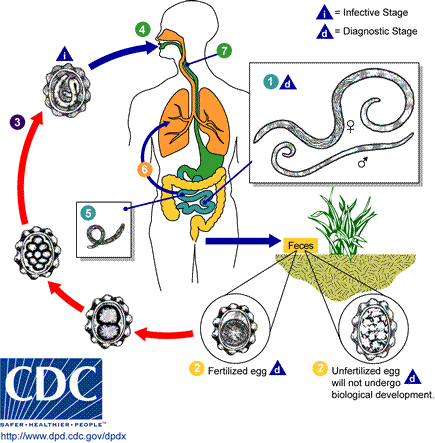Definition
Hemoptysis is the coughing up of blood or bloody sputum from the lungs or airway. It may be either self-limiting or recurrent. Massive hemoptysis is defined as 200-600 mL of blood coughed up within a period of 24 hours or less.
Description
Hemoptysis can range from small quantities of bloody sputum to life-threatening amounts of blood. The patient may or may not have chest pain.
Causes & symptoms
Hemoptysis can be caused by a range of disorders:
- Infections. These include pneumonia; tuberculosis; aspergillosis; and parasitic diseases, including ascariasis, amebiasis, and paragonimiasis.
- Tumors that erode blood vessel walls.
- Drug abuse. Cocaine can cause massive hemoptysis.
- Trauma. Chest injuries can cause bleeding into the lungs.
- Vascular disorders, including aneurysms, pulmonary embolism, and malformations of the blood vessels.
- Bronchitis. Its most common cause is long-term smoking.
- Foreign object(s) in the airway.
- Blood clotting disorders.
- Bleeding following such surgical procedures as bronchial biopsies and heart catheterization.
Diagnosis
The diagnosis of hemoptysis is complicated by the number of possible causes.
Patient history
It is important for the doctor to distinguish between blood from the lungs and blood coming from the nose, mouth, or digestive tract. Patients may aspirate, or breathe, blood from the nose or stomach into their lungs and cough it up. They may also swallow blood from the chest area and then vomit. The doctor will ask about stomach ulcers, repeated vomiting, liver disease, alcoholism, smoking, tuberculosis, mitral valve disease, or treatment with anticoagulant medications.
Physical examination
The doctor will examine the patient's nose, throat, mouth, and chest for bleeding from these areas and for signs of chest trauma. The doctor also listens to the patient's breathing and heartbeat for indications of heart abnormalities or lung disease.
Laboratory tests
Laboratory tests include blood tests to rule out clotting disorders, and to look for food particles or other evidence of blood from the stomach. Sputum can be tested for fungi, bacteria, or parasites.
X-ray and bronchoscopy
Chest x-rays and bronchoscopy are the most important studies for evaluating hemoptysis. They are used to evaluate the cause, location, and extent of the bleeding. The bronchoscope is a long, flexible tube used to identify tumors or remove foreign objects.
Imaging and other tests
Computed tomography scans (CT scans) are used to detect aneurysms and to confirm x-ray results. Ventilation-perfusion scanning is used to rule out pulmonary embolism. The doctor may also order an angiogram to rule out pulmonary embolism, or to locate a source of bleeding that could not be seen with the bronchoscope.
In spite of the number of diagnostic tests, the cause of hemoptysis cannot be determined in 20-30% of cases.
Treatment
Massive hemoptysis is a life-threatening emergency that requires treatment in an intensive care unit. The patient will be intubated (the insertion of a tube to help breathing) to protect the airway, and to allow evaluation of the source of the bleeding. Patients with lung cancer, bleeding from an aneurysm (blood clot), or persistent traumatic bleeding require chest surgery.
Patients with tuberculosis, aspergillosis, or bacterial pneumonia are given antibiotics.
Foreign objects are removed with a bronchoscope.
If the cause cannot be determined, the patient is monitored for further developments.
Prognosis
The prognosis depends on the underlying cause. In cases of massive hemoptysis, the mortality rate is about 15%. The rate of bleeding, however, is not a useful predictor of the patient's chances for recovery.
Key Terms
- Aneurysm
- A sac formed by the dilation of the wall of an artery, vein, or heart; it is filled with clotted blood or fluid.
- Angiography
- A technique for imaging the blood vessels by injecting a substance that is opaque to x rays.
- Aspergillosis
- A lung infection caused by the mold .
- Intubation
- The insertion of a tube into a body canal or hollow organ, as into the trachea or stomach.
- Pulmonary embolism
- The blocking of an artery in the lung by a blood clot.
Further Reading
For Your Information
Books
- Idell, Steven. "Hemoptysis." In Current Diagnosis 9, edited by Rex B. Conn, et al. Philadelphia: W. B. Saunders Company, 1997.
- "On-Call Problems: Hemoptysis." In Surgery On Call, edited by Leonard G. Gomella and Alan T. Lefor. Stamford, CT: Appleton & Lange, 1996.
- "Pulmonary Disorders: Hemoptysis." In The Merck Manual of Diagnosis and Therapy, vol. II, edited by Robert Berkow, et al. Rahway, NJ: Merck Research Laboratories, 1992.
- Stauffer, John L. "Lung." In Current Medical Diagnosis & Treatment 1998, edited by Lawrence M. Tierney, Jr., et al. Stamford, CT: Appleton & Lange, 1997.
Gale Encyclopedia of Medicine. Gale Research, 1999.



